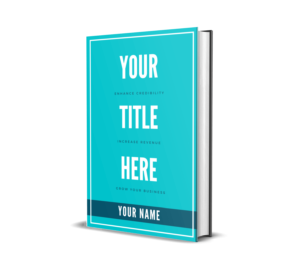How to Write Nonfiction: 4 Writing Styles That Generate a Great Book
It all starts with an idea. A spark. Your aha moment. I want to write a book, you say to yourself. But there’s one problem: you’re not entirely sure how to write nonfiction.
The good thing here is that you have decided to venture out and do a little bit of research before diving in. Good job. By doing so, you have just saved yourself hours, days, or even weeks of editing.
There are a variety of reasons to write a nonfiction book, but in order to write an impactful one, you need to know what your audience wants.
For example, a self-help reader doesn’t want to be burdened with an extensive vocabulary and long, daunting paragraphs. They want the support they desire and they want it in an easily digestible format.
Writing in the proper format is important and it starts with the type of book you are writing.
Want to write a book in 2022?
Nonfiction book types
A book is a book, right? Well, not exactly. It doesn’t boil down to just fiction versus nonfiction. There are many more components to a book than, simply put, real or fake.
When it comes to fiction, there are a seemingly endless number of genres and subgenres. It takes a lot of research to figure out exactly which subgenre your book will fit into, especially if you want it to be successful. Or if you want to land an agent that represents your type of work.
If you want to know how to write nonfiction, however, you need to do similar research beforehand. Mostly, you want to know the book category so that you can know who your target reader is, and write with that reader’s interests in mind.
The level of depth for nonfiction book categories can be extensive, but here are some of the most common nonfiction book categories:
- Religion
- History
- Philosophy
- Children’s nonfiction
- Education
- Travel
- How-to guides
- Business
- Economics
- Politics
- Memoirs and Biographies
And the list goes on…
The point is there is a wide range of topics on which one can write. By failing to decipher the type of book you want to write at the beginning, you risk the possibility of working backward in the future—something counterintuitive to opening more of your time.
Which industry are you in? What are you looking to share with your book, and who would be the ideal reader? These will help you to choose which category is best for you and your project.
Once you determine your category, it’s time to think about the voice you want. Your desired voice can help you determine which type of nonfiction book you want to write. And your writing style will help to determine your voice.
Now, with your target audience member pinpointed, you can think about which writing style would be best.
Nonfiction Writing Styles
Writing is all about painting a picture, right? Maybe. For some types of writing, that’s true. For others, not so much.
Here’s how to write nonfiction in four different ways:
Narrative Nonfiction
Also called creative nonfiction or literary nonfiction, this writing style focuses on storytelling aspects. If you want to paint a picture with your words, narrative nonfiction is a writing style to consider.
Shoe Dog by Phil Knight, the founder of Nike, is a memoir written in narrative nonfiction format. It tells a story, painting pictures with its words and driving the reader from one moment to the next with suspense and anticipation, much like a novel would.
Write your book and have it published to Amazon, Barnes & Noble, and more…
This type of writing typically works well with memoirs and autobiographies and is written in first-person format, so the reader is in the shoes of the author.
Expository Nonfiction
If you’re an expert in your field and you are writing an informative and educational piece, expository nonfiction is the writing style you should use. This lays out the material in a clear, chronological order.
Expository writing works well with business books, educational pieces, how-to guides, and other informative pieces that rely less on painting a picture and more on creating an actionable guide.
Persuasive Nonfiction
Politics, religion, and philosophy tend to be written in this format. Authors writing in this format are looking to persuade others. This writing style provides answers to arguments and is backed up with statistics or other credible findings.
Think of an op-ed piece as an example. The contents of the piece are an opinion, but the reader is trying to make sense of that opinion. There are plenty of political books that can be listed as examples and a simple Amazon search for “political books” can produce a ton of results.
Descriptive Nonfiction
Descriptive nonfiction goes further than painting a picture the way narrative nonfiction does. It opens up all five senses. It is narrative nonfiction amplified and is used best in travel guides to portray the surroundings one encounters.
How to Write Nonfiction for Your Target Reader
Confused about which method would work best for you and your book? Don’t get overwhelmed. Remember to think of your ideal reader and what they would enjoy reading most. What would resonate with them best? Which method would be most impactful?
Go through the process of elimination and start to narrow down your choices. If you’re still confused, experiment a little. Take one topic or talking point and write up a few paragraphs in one style, then write on the same content in another style. Send it out to a few target readers and see which works best.
Remember to keep that target reader in mind. Don’t attempt to appeal to the masses. That won’t be possible. The strategy for your book needs to be similar to the strategy for your business: capture the niche market and then expand.


